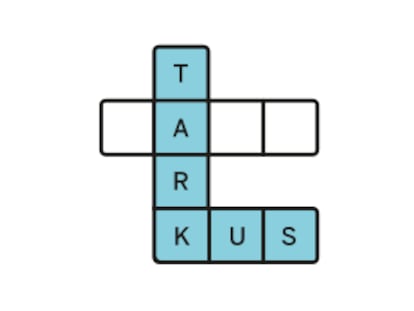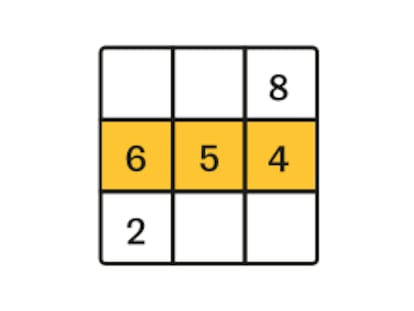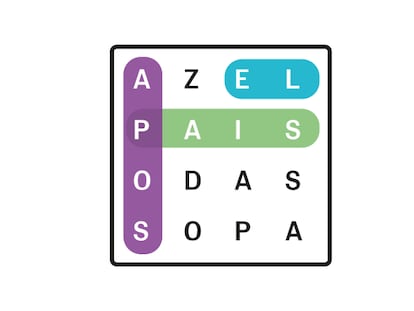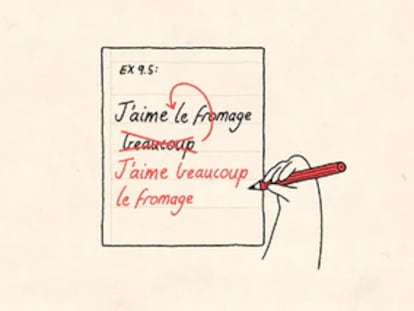Trump threatens to cut NASA’s science budget in half
The American Astronomical Society warns that the proposed cuts would have ‘catastrophic’ consequences for the United States’ leadership in space exploration
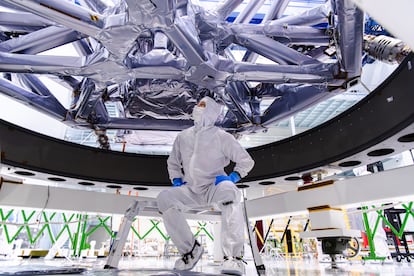
The Donald Trump administration wants to cut NASA’s science budget in half. This move would cancel major space telescope projects, shutter key agency centers, and result in the layoff of thousands of employees. Overall, the president intends to cut nearly one in four dollars from the budget of the world’s largest space agency, an attack that focuses primarily on major astronomy programs and new robotic space missions.
These proposed cuts are part of a preliminary version of the 2026 federal budget sent by the White House to NASA, a document that was subsequently leaked to The Washington Post and the specialized media outlet Ars Technica.
According to the draft, funding for NASA’s science division would drop from roughly $7.5 billion to $3.9 billion — effectively dismantling entire programs devoted to studying Earth, the solar system, and the universe. While Congress is expected to push back on many of these proposals, the budget makes the administration’s priorities clear: a shift toward human spaceflight, a return to the Moon via the Artemis program, and preparations for crewed missions to Mars. These areas have been spared from cuts so far, likely because they enjoy strong political support from Republican lawmakers whose states benefit economically from manned spaceflight programs.
The initial proposal would slash two-thirds of NASA’s astrophysics program, 50% of the solar and stellar physics budget, over 50% of Earth science funding, and a third of the planetary science program. Although flagship missions like the James Webb and Hubble space telescopes remain funded, the future of next-generation projects — such as the Nancy Grace Roman Space Telescope, an observatory with a $3.5 billion price tag that is already built and scheduled to launch in 2027— is uncertain.
Other casualties of the proposed budget include the ambitious Mars Sample Return mission, which aims to bring back rock specimens collected by the Perseverance rover to search for signs of past life, and the Da Vinci mission to Venus. The plan also calls for the closure of NASA’s Goddard Space Flight Center, a hub that supports roughly 10,000 direct and indirect jobs.
The leak has added to growing uncertainty surrounding NASA and the broader U.S. scientific landscape, which is facing some of the deepest federal cuts in its history. This draft emerged just days after NASA’s newly appointed administrator — entrepreneur and amateur astronaut Jared Isaacman — testified before the Senate, promising that the U.S. would land astronauts on the Moon before China and prioritize reaching Mars as soon as possible. Isaacman also pledged that NASA would be a “force multiplier for science” under his leadership.
However, it appears unlikely that Isaacman had any role in shaping the leaked budget proposal, as his appointment has yet to be confirmed. Regardless, it would be nearly impossible for NASA to realize the ambitious vision he outlined to senators with such a drastically reduced budget.
Adding to the confusion, Elon Musk — who currently heads the White House Office of Government Efficiency — expressed concern on social media, calling the budget proposal “troubling.” “I am very much in favor of science, but unfortunately cannot participate in NASA budget discussions, due to SpaceX being a major contractor to NASA,” he wrote, referring to his rocket company. Musk’s comments follow his recent criticism of President Trump’s tariff policies and reports that he may soon exit his government role.
The American Astronomical Society has described the proposed cuts as “catastrophic” for the United States’ leadership in space science. “The impacts of these proposed funding cuts would not only be devastating to the astronomical sciences community, but they would also have far-reaching consequences for the nation,” said AAS President Dara Norman in a statement.
Norman warned that the cuts threaten an entire generation of young scientists. “Without robust and sustained federal funding for the sciences, the United States will lose at least a generation of talent to other countries that are increasing their investments in facilities and workforce development,” she said. “These cuts will certainly result in the loss of American leadership in science.”
The leaked draft is the first step in the lengthy process of deciding NASA’s 2026 budget. A formal budget proposal from the White House is expected to be released later this year, with congressional debate scheduled to begin in October.
Sign up for our weekly newsletter to get more English-language news coverage from EL PAÍS USA Edition
Tu suscripción se está usando en otro dispositivo
¿Quieres añadir otro usuario a tu suscripción?
Si continúas leyendo en este dispositivo, no se podrá leer en el otro.
FlechaTu suscripción se está usando en otro dispositivo y solo puedes acceder a EL PAÍS desde un dispositivo a la vez.
Si quieres compartir tu cuenta, cambia tu suscripción a la modalidad Premium, así podrás añadir otro usuario. Cada uno accederá con su propia cuenta de email, lo que os permitirá personalizar vuestra experiencia en EL PAÍS.
¿Tienes una suscripción de empresa? Accede aquí para contratar más cuentas.
En el caso de no saber quién está usando tu cuenta, te recomendamos cambiar tu contraseña aquí.
Si decides continuar compartiendo tu cuenta, este mensaje se mostrará en tu dispositivo y en el de la otra persona que está usando tu cuenta de forma indefinida, afectando a tu experiencia de lectura. Puedes consultar aquí los términos y condiciones de la suscripción digital.
More information
Archived In
Últimas noticias
There is as much life left to discover on planet Earth as that which is already known
Dozens presumed dead, around 100 injured in fire at Swiss Alps bar during New Year’s celebration
Is porn for women different from conventional porn? We spoke to those who make it
Cartagena de Indias is sinking: What can the city do to mitigate it?
Most viewed
- Reinhard Genzel, Nobel laureate in physics: ‘One-minute videos will never give you the truth’
- Sinaloa Cartel war is taking its toll on Los Chapitos
- David King, chemist: ‘There are scientists studying how to cool the planet; nobody should stop these experiments from happening’
- Oona Chaplin: ‘I told James Cameron that I was living in a treehouse and starting a permaculture project with a friend’
- The Interoceanic Train, the Mexican alternative to the Panama Canal
























